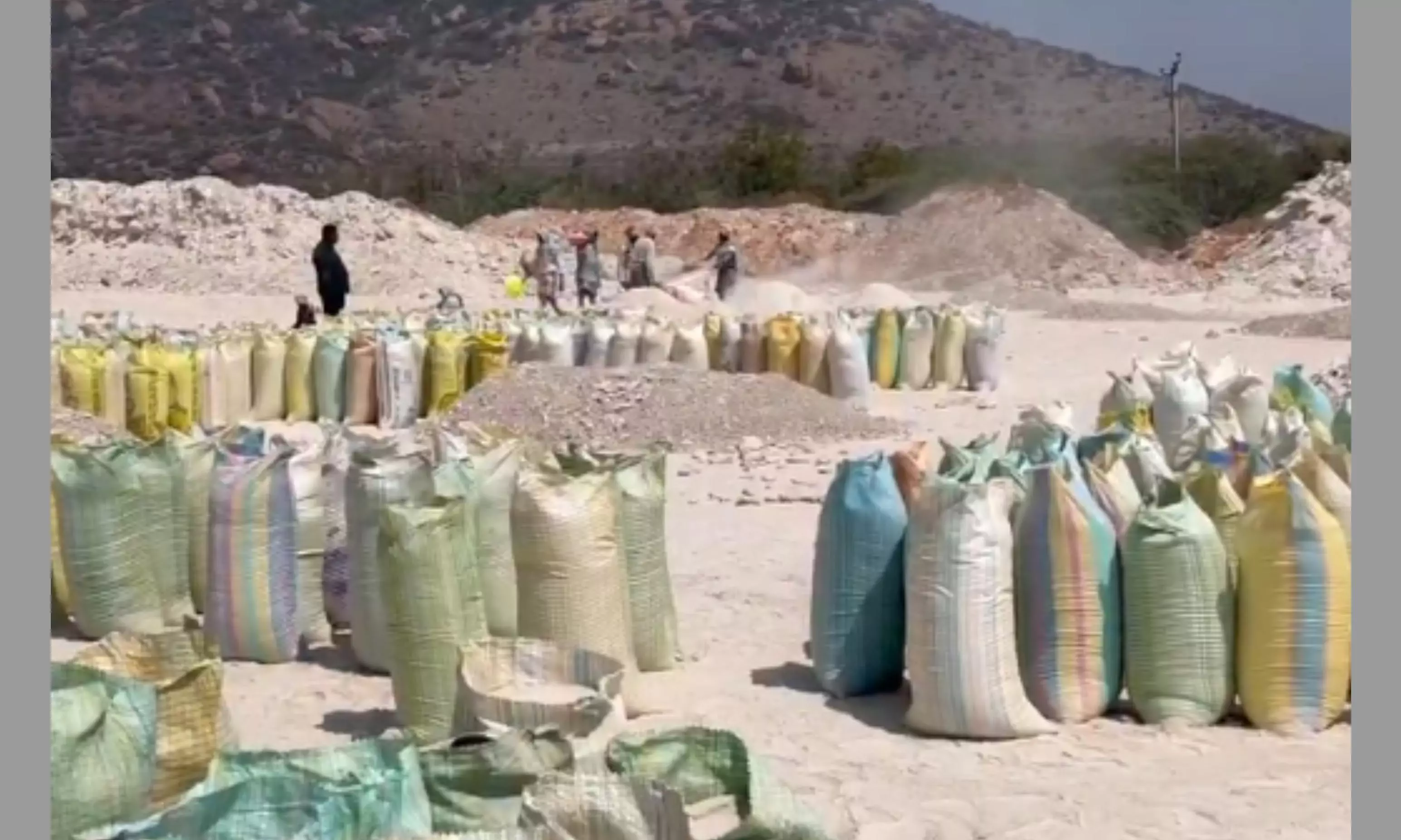Ashes of Super Volcanic Eruption Under Loot by Sand Mafia in Jwalapuram
Jwalapuram came into the spotlight in 2007 when an international team of anthropologists and archaeologists excavated the site and uncovered evidence that challenged the prevailing theories of human migration and survival

Kurnool: The archaeological site of Jwalapuram in Nandyal district, one of the most significant prehistoric locations, is under threat from the sand mafia.
Private landowners are selling ancient sand dunes to companies at the rate of Rs.1,000 per tonne. These sand layers are believed to contain remnants of the Mt. Toba supervolcanic eruption that occurred about 74,000 years ago in present-day Indonesia.
These are crucial to understanding early human survival and evolution on the Indian subcontinent.
Jwalapuram came into the spotlight in 2007 when an international team of anthropologists and archaeologists excavated the site and uncovered evidence that challenged the prevailing theories of human migration and survival.
The findings showed that Middle Stone Age humans lived in the region both before and after the Toba eruption, suggesting that this catastrophic event did not wipe out early populations, contrary to the Toba catastrophe theory.
The Toba eruption, having originated in Sumatra, was a massive volcanic event on Earth, ejecting approximately 3,000 cubic km of material into the atmosphere.
This event caused a global volcanic winter lasting several years and left a thick ash layer across large parts of Asia, including six to eight metres of ash in parts of India and Pakistan.
The ash has later been detected even in ice cores from Greenland and seabed cores from the Indian and South China seas.
At Jwalapuram, located in the Jurreru river area of Nandyal, archaeologists found stone tools in layers both above and below the ash deposits. This proved that humans not only lived in the region prior to the eruption but also survived its impact.
More than 15,000 stone tools were recovered from deeper excavation layers, showcasing 23 distinct categories of tools with unique flaking patterns, believed to be made by modern humans there.
Michael Petraglia, a leading anthropologist who co-authored a study, argued that the continuity of tool-making technologies across the Toba ash layer is a strong indication of uninterrupted human presence.
Alongside Prof Korisettar, he suggested that modern humans may have arrived in India some 1,00,000–1,20,000 years ago, far earlier than previously believed.
Despite its global significance, the site now faces erosion and destruction due to commercial sand mining.
Retired professor and adjunct faculty at the national institute of advanced studies, Prof Ravindra Korisettar, said the groundbreaking research at Jwalapuram was conducted over a decade ago. Yet no government has shown an interest in preserving even a portion of this crucial site.
He expressed concern that, at the very least, the district administration should recognize the site's significance as key evidence in understanding human evolution. He also emphasized the need for the Archaeological Survey of India (ASI) to take immediate and adequate protective measures.
The state wing of ASI is yet to respond despite officials acknowledging the urgency of preserving this vital heritage.
K Munirathnam, director of epigraphy, Mysore, noted the site's significance and emphasized that the AP unit must act fast to safeguard this area.

